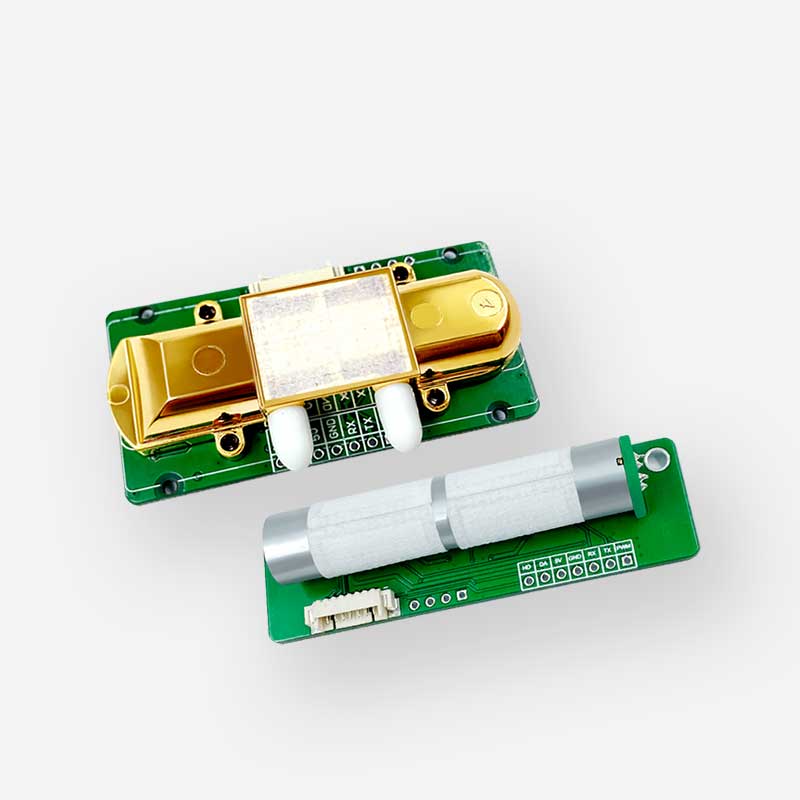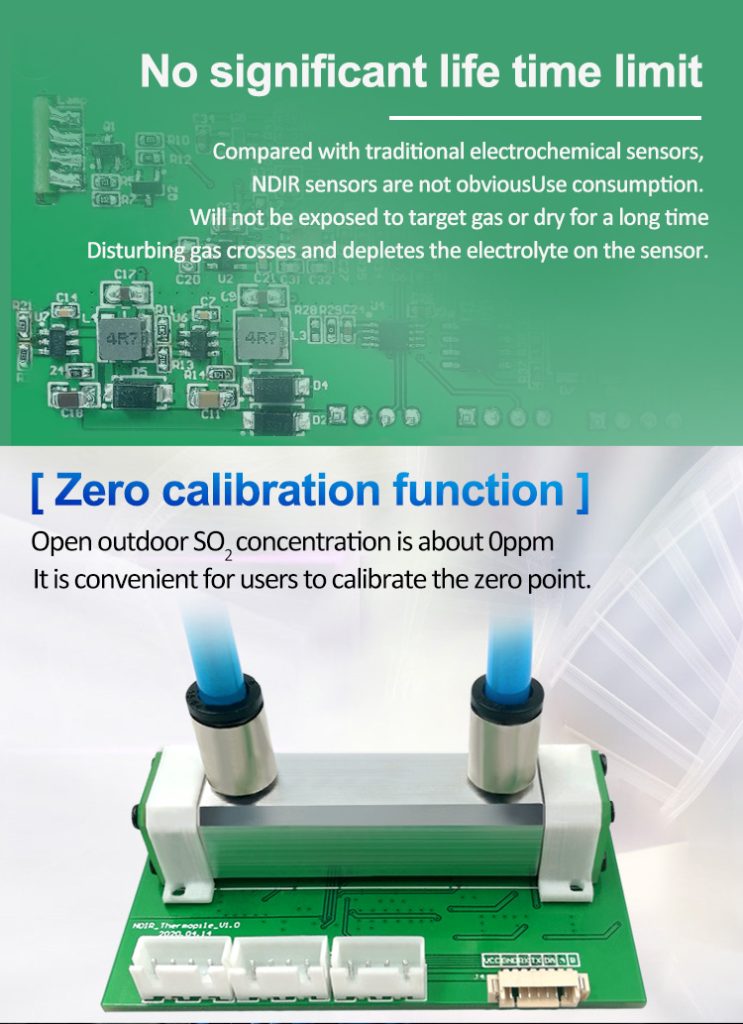NDIR sensors
One of the most promising innovations is non-dispersive infrared (NDIR) sensors technology. This article will explore how NDIR sensors can revolutionize air quality, including their functional principles, applications, and benefits.

Functioning Principle of NDIR Sensors
NDIR sensors operate by analyzing the absorption of infrared light in a sample gas, and are based on the principle that different gases absorb certain wavelengths of infrared radiation. The sensor uses an infrared light source, which generates a specific wavelength of infrared light aimed at the sample gas. If the gas being measured has molecules that absorb that specific wavelength, then the amount of transmitted light is reduced, and this difference in intensity is measured as a signal.

The absorption of light by a sample gas can be accurately measured, which allows the NDIR sensors to evaluate the concentration of a specific gas in a mixture of gases. This, in turn, makes NDIR sensors ideal for measuring different gases in a variety of applications.
Applications of NDIR Sensor
There are numerous applications for NDIR sensor in air quality management, including:
Indoor air quality: Indoor air quality is a primary concern in buildings and homes. NDIR sensor can detect and measure various gases that affect indoor air quality, such as carbon dioxide (CO2), volatile organic compounds (VOCs), and nitrogen dioxide (NO2). In addition, these sensors can be incorporated into ventilation systems, which can automatically maintain safe and comfortable indoor air quality levels.
Industrial processes: NDIR sensors are used in various industrial processes, such as monitoring greenhouse gas emissions, monitoring the concentration of solvents in paint booths, and measuring carbon monoxide (CO) in steel mills.
Air pollution monitoring: Air pollution is a growing concern worldwide, and NDIR sensors can play a crucial role in monitoring its levels. These sensors can detect and quantify greenhouse gases, such as methane and carbon dioxide, as well as other air pollutants, such as nitrogen oxides and ozone.
Benefits of NDIR Sensors
There are numerous benefits to using NDIR sensors for air quality management, including:
High accuracy: NDIR sensors are highly accurate and reliable, providing accurate measurements with minimal error.
Low maintenance: NDIR sensors are low maintenance and do not require regular calibration, which reduces maintenance costs.
Wide measurement range: NDIR sensor have a wide measurement range, allowing them to detect trace concentrations of gases.
Quick response time: NDIR sensor provide real-time data, making it easy to take immediate action when air quality falls below acceptable levels.
Low cost: NDIR sensor are relatively low cost compared to other air quality monitoring technologies, making them a cost-effective solution.
Conclusion
In conclusion, NDIR sensor have the potential to revolutionize air quality management due to their high accuracy, low maintenance, wide measurement range, quick response time, and low cost. Their applications are vast and would include monitoring indoor air quality, industrial processes, and air pollution monitoring. Governments, environmental groups, and individuals can leverage this technology to improve air quality and, in turn, protect human health, the environment and the economy.